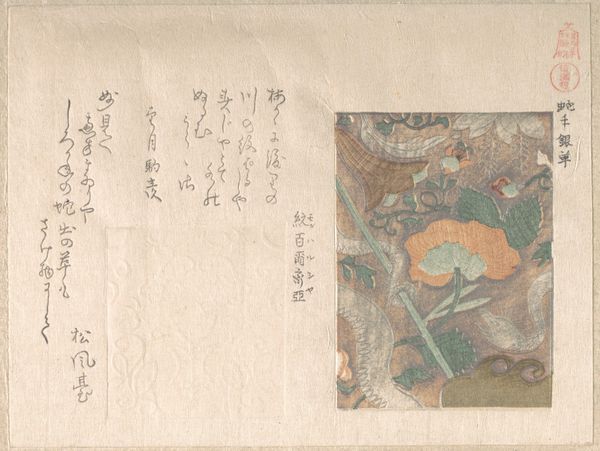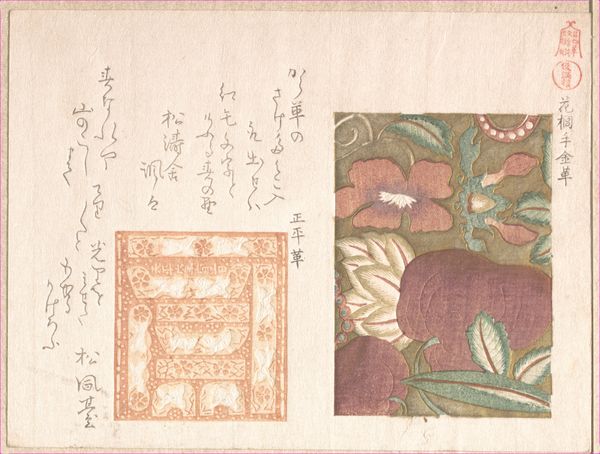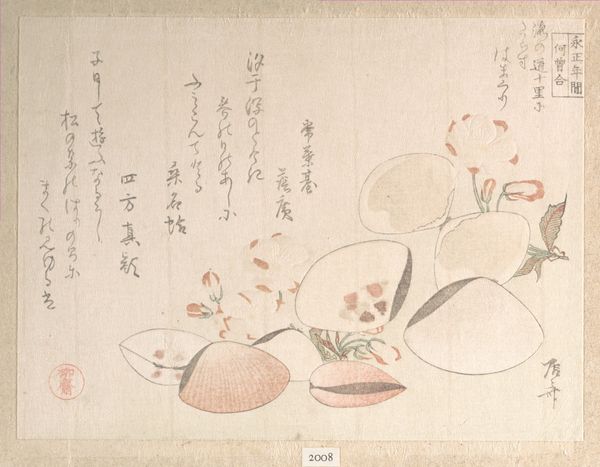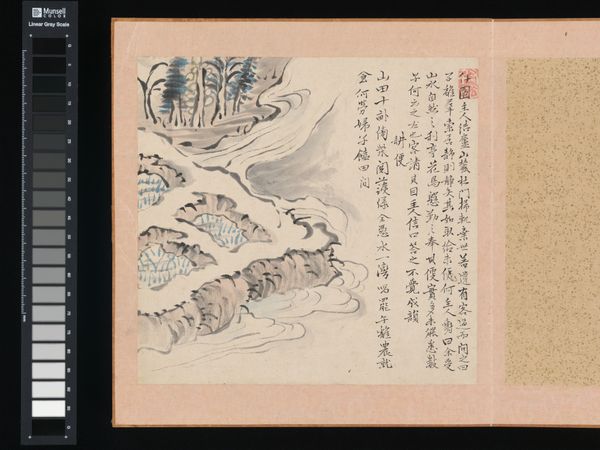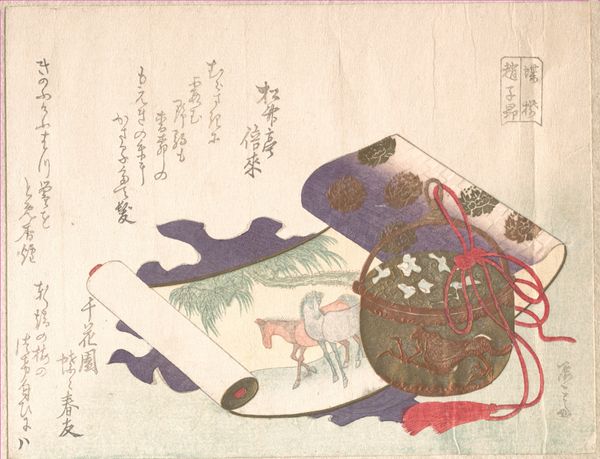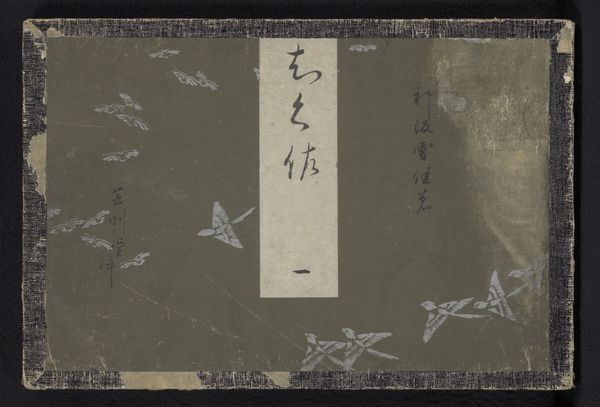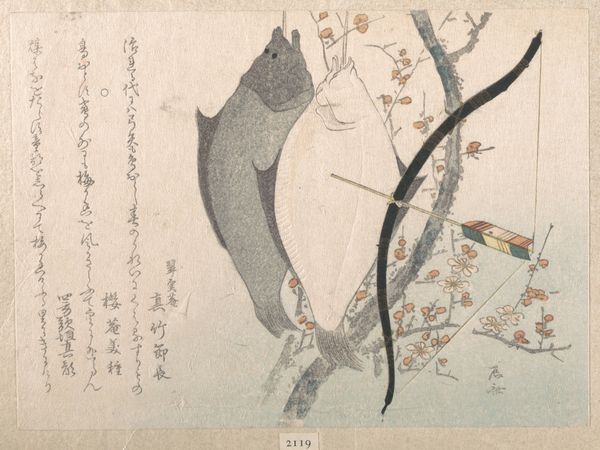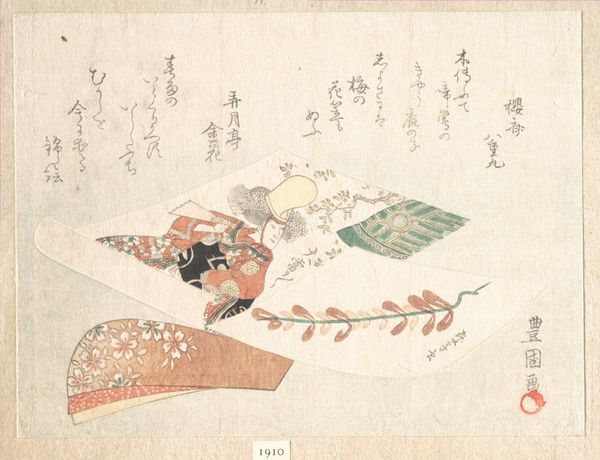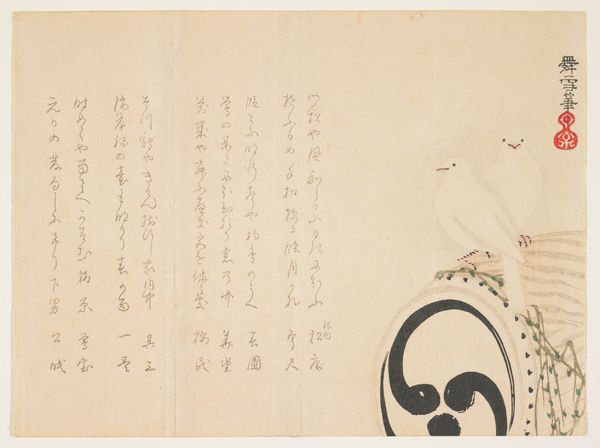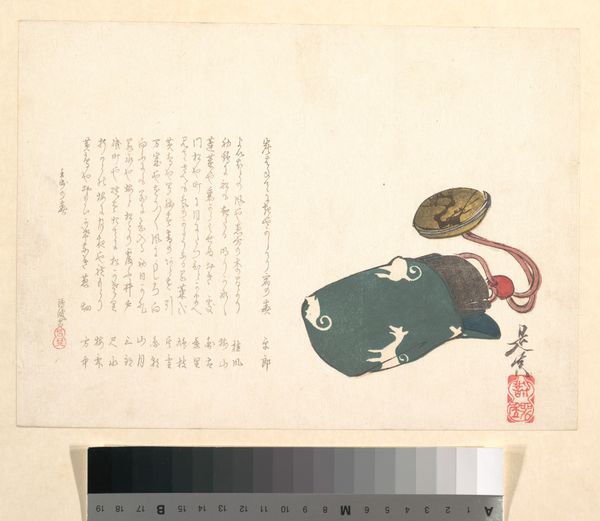
print, watercolor
#
water colours
# print
#
asian-art
#
flower
#
japan
#
watercolor
#
watercolor
Dimensions: 5 1/4 x 7 1/16 in. (13.3 x 17.9 cm)
Copyright: Public Domain
Curator: Let's turn our attention to this striking 19th-century print, “Design for Leather and Netsuke” by Kubo Shunman, currently housed at the Metropolitan Museum of Art. Editor: My immediate impression is of its dark, dense pattern, like a garden teeming with hidden life. The strong contrast really emphasizes each little element. What materials are at play here? Curator: This is a watercolor print. Considering the period, this artwork can give us insights into the cultural intersection of fashion, craft, and the applied arts in Japan at that time. The designs suggest an interconnected world of garment making, artisanal production, and artistry. Editor: Exactly! I find it fascinating how this combines functional design—leather patterns and netsuke, right?—with what we might consider 'fine art.' Looking at the lines and layering, what was the printing process? Was there mass production, or perhaps it was for a single artisan? Curator: The netsuke motifs here are significant. Beyond being functional toggles for carrying personal items, they became potent symbols of status and identity, subtly broadcasting personal narratives. Shunman offers glimpses into the desires and aspirations of his society. Editor: It brings up questions about the work involved. These objects represent more than mere commodities. They symbolize a culmination of both the natural materials from which they are crafted, and the highly skilled labor employed in transforming the materials. How were artisans perceived in the broader social context? Curator: Well, it's complex. Craftspeople could achieve a certain level of renown, particularly those serving the elite, yet they were also often bound by strict social hierarchies. What strikes me is the artist's attention to detail – using delicate watercolors to convey textures and depth in what's essentially a functional blueprint. Editor: Precisely, it speaks to this liminal space. Between ‘high’ and ‘low’ art forms lies an entire world of making and labor, connecting art to broader cultural practices. Reflecting on it all, this work bridges the distance between creation and social production. Curator: Ultimately, "Design for Leather and Netsuke" presents a unique opportunity to examine the dialogues between design, identity, and craftsmanship in 19th-century Japan. Editor: For me, it really blurs our ideas of "art," demanding that we re-evaluate value and production itself.
Comments
No comments
Be the first to comment and join the conversation on the ultimate creative platform.
